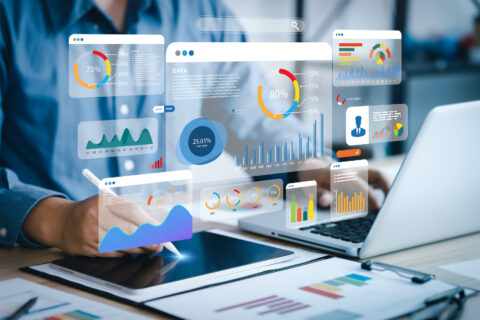
Artificial intelligence has been greatly advanced by the development of machine learning technology. It enables computers to learn as they analyze and process data, allowing them to perform increasingly complex tasks over time without the need for human intervention.
Learning these tasks allow them to be more useful, accurate and adaptable to a variety of machine situations. Artificial intelligence is quickly becoming a ubiquitous reality of the modern world, with companies brainstorming ways it can be used in everything including your phone, your car and big data analytics.
Machine learning can also enable companies to develop more powerful, intelligent and adaptable programs in order to do so. This field is rapidly changing thanks to continuous developments among computer scientists. Here are five machine learning trends that will continue to define business in 2018 and beyond.
Algorithms will take over big data analytics
One of the most significant changes that is likely to take hold of machine learning is the use of algorithms that can collect, analyze and interpret data without data scientists needing to step in and manipulate the numbers to understand them.
This shaves time off the analytics process as well as increases its speed and accuracy, allowing companies to more quickly process whatever information they get their hands on. The Japanese-based company Fanuc, for example, uses algorithms to help teach robots how to complete tasks. Its existing algorithm allows a robot to learn a new task with 90 percent accuracy in eight hours of practice.
Open software machine learning will grow
Cloud technology is increasingly giving companies flexibility on how they store data and who has access to it. Companies are becoming more receptive to sharing information with the cloud and drawing information from it; making big data and the information scientists can gain from it part of an open-source project that brings democracy and public access to the information that analysts are putting out there.
By making machine learning technology public access, small companies are able to equally benefit from crowdsourcing improvements and have access to analytics that previously, only larger companies could get to. In 2016, Amazon developed a cloud-based service to help companies develop machine learning algorithms by providing tools and guides for businesses or individuals to employ.
AI will transform smartphones
Mobile apps are increasingly using machine learning to become more intuitive, adapt to user needs and requests and analyze information presented by users for companies. Machine learning can be used in mobile apps to refine a customer’s needs, predict more accurately what they will do, develop more challenging levels for particular forms of gameplay, translating voice commands into actions on the app and predicting future user behavior or interpret user input.
For example, an app for a clothing store that utilizes machine learning can eventually figure out that users typing “black bandeau” are looking for a bathing suit top. With machine learning, the app can automatically suggest or autocomplete a suggestion on behalf of users who input such text in the future. The popular social media app Snapchat uses machine learning to improve its advertisement targeting. The app analyzes which apps pique readers’ interests the most and learn to target content based on user response.
Skill demand will surpass supply
In 2015, a study predicted that by 2018 there would be a massive shortage of data scientists for all the companies looking to implement the field into their practices. That supply gap is likely to be felt this year, as more and more companies attempt to look into machine learning and data analytics to improve their company performance and response.
Alternative methods of educating data scientists outside of the traditional college setting will need to be developed in order to meet a growing need among businesses. Schools like Stanford University and MIT have developed massive open online courses in data science for those interested to learn about data science without being enrolled in the school.
Expansion into healthcare
Machine learning is becoming ubiquitous in a number of fields. One of the fields that is expected to benefit from machine learning is healthcare, where healthcare administrators are learning how to incorporate machine learning into patient care, with new advances in 3D treatment.
Machine learning algorithms can help healthcare providers identify outliers in patient response and recovery and offer more individualized care. According to Zeeshan Syed, who studies algorithms and practices medicine at Stanford Health Care and Stanford University School of Medicine, machine learning can help identify when patients are at high risk for a heart attack or identify particular biomarkers that predict a particular illness.
Machine learning is helping businesses better process the massive influx of data they are able to receive, enabling them to predict outcomes and respond to them pre-emptively. Companies will begin implementing machine learning more widely, including on our smartphones, and are increasingly relying on machine learning to shorten the process of crunching numbers effectively.
This article has been edited.
Simon Crompton is a freelance journalist and entrepreneur, who spends the majority of his time blogging about business startups and consulting on web development. He has launched multiple online companies. He is also a dedicated follower of fashion, and has written for the Financial Times and GQ. Connect with @PermanentStyle on Twitter.
© YFS Magazine. All Rights Reserved. Copying prohibited. All material is protected by U.S. and international copyright laws. Unauthorized reproduction or distribution of this material is prohibited. Sharing of this material under Attribution-NonCommercial-NoDerivatives 4.0 International terms, listed here, is permitted.













